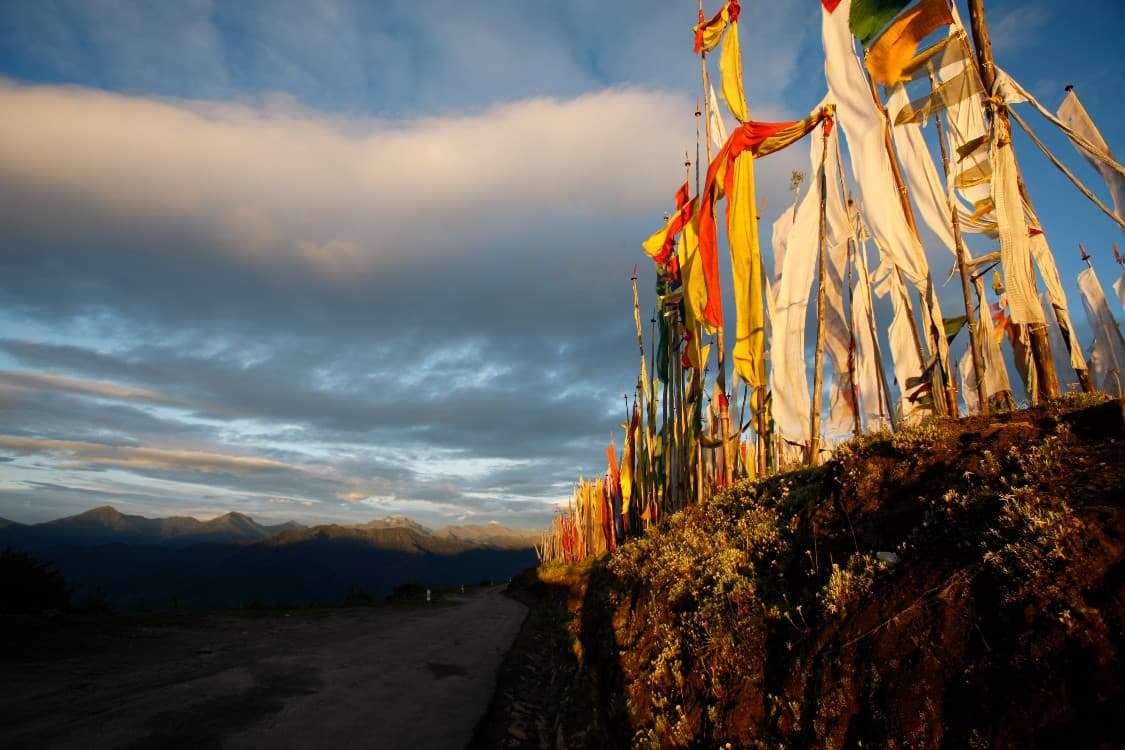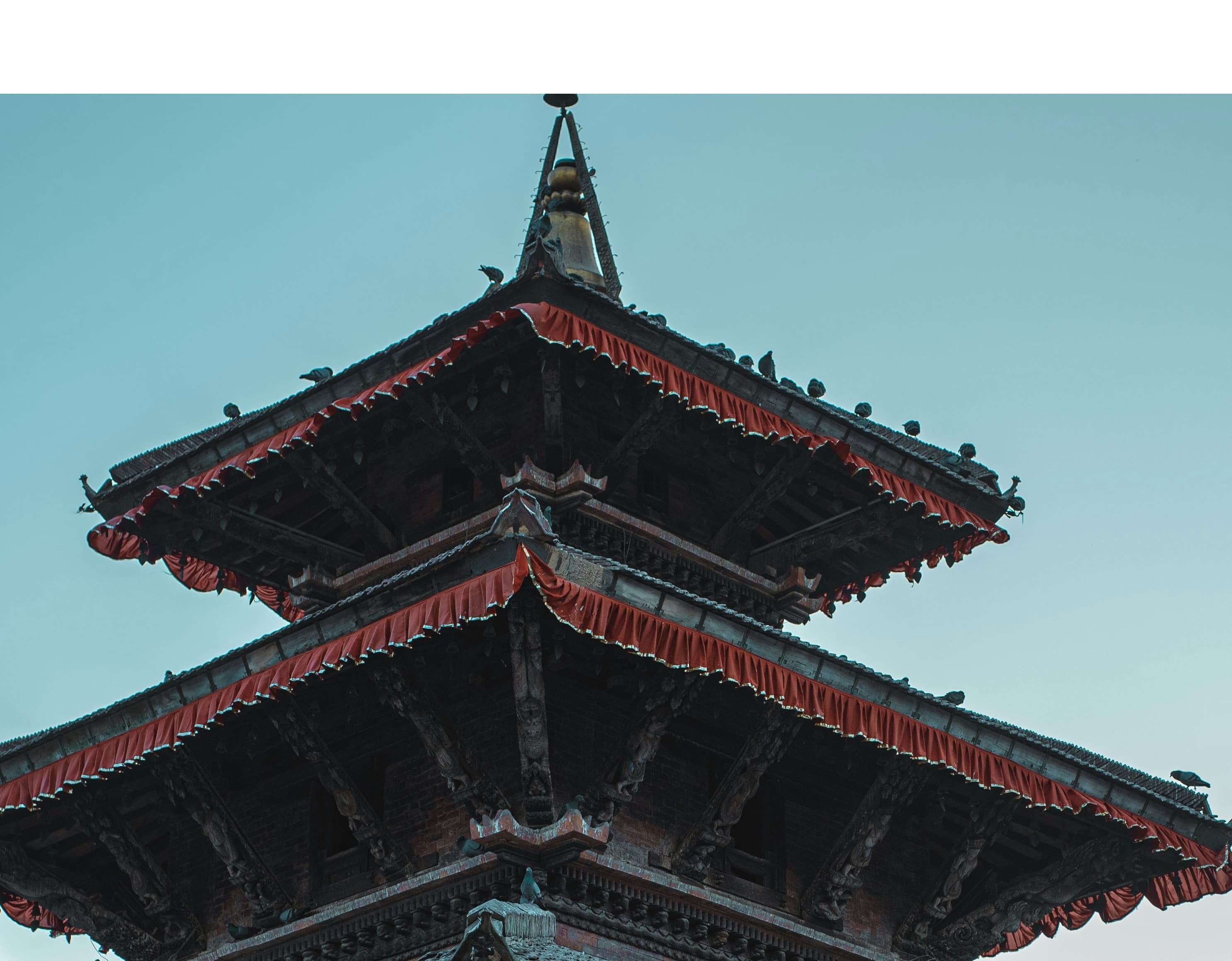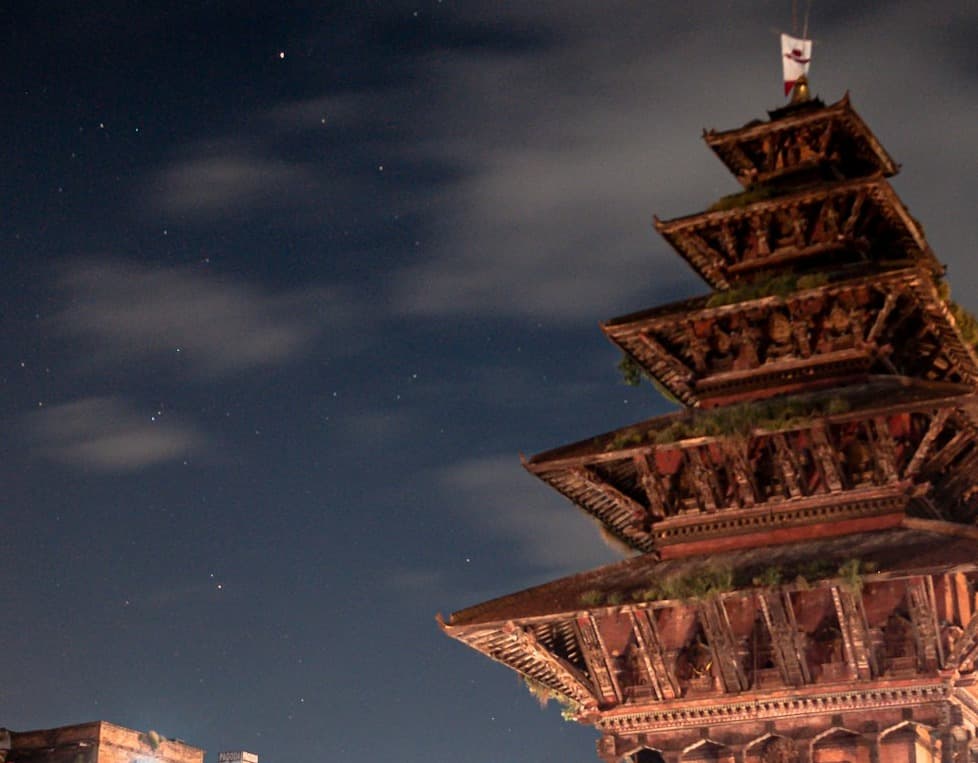Brief:
Traveling from Nepal to Bhutan is a unique journey that transitions you from the majestic Himalayas of Nepal to the serene and mystical landscapes of Bhutan. The most direct and efficient way to travel between these two Himalayan nations is by air, with flights from Kathmandu's Tribhuvan International Airport to Paro International Airport. Paro is one of the only international airports in Bhutan, and it is serviced by Druk Air and Bhutan Airlines. The flight duration is typically around 1.5 hours, offering breathtaking views of the Himalayas, including glimpses of Mount Everest and Kanchenjunga.
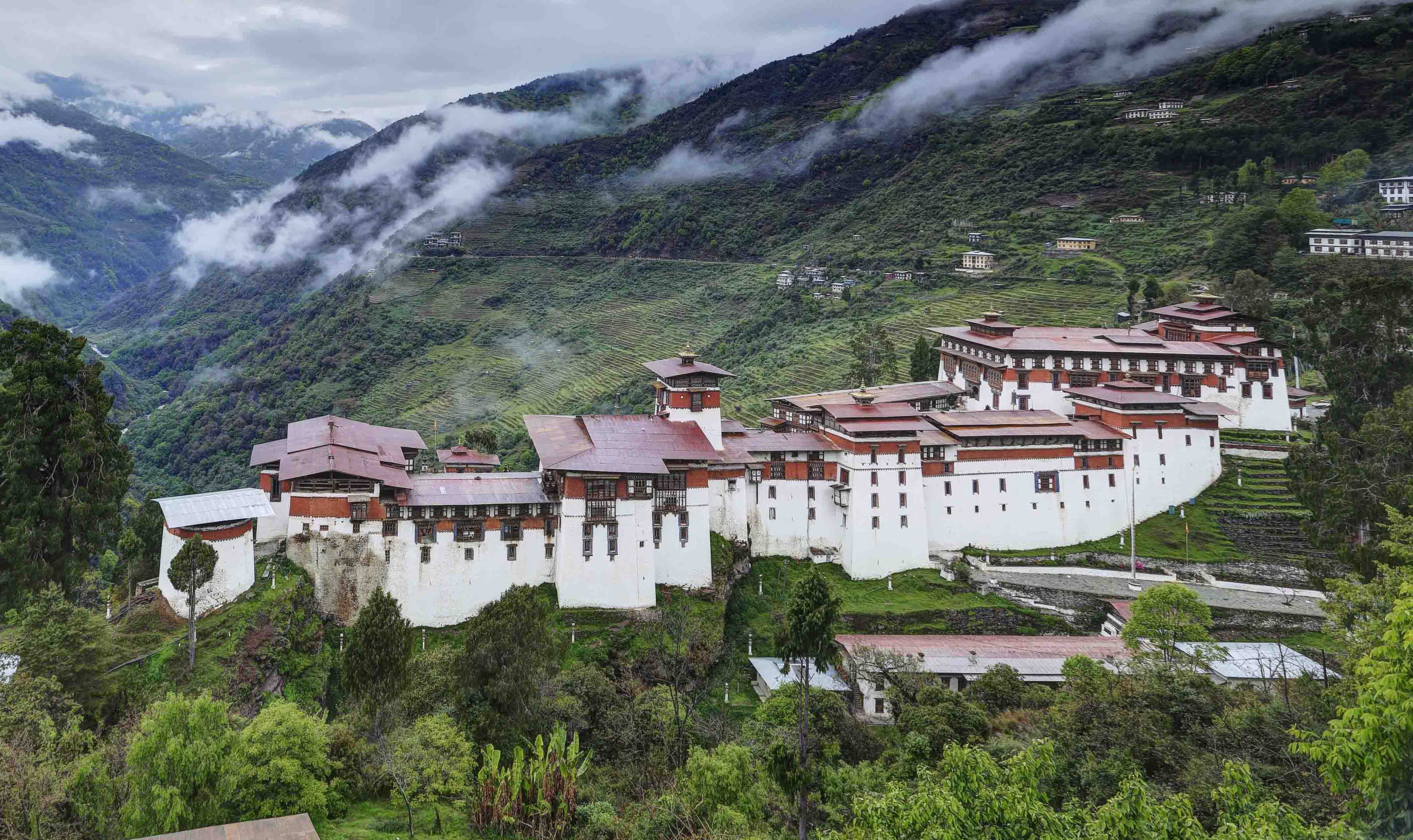
Upon planning a trip to Bhutan, travelers must be aware of the unique entry requirements. Bhutan does not permit independent travel for most international tourists, requiring them to book their visit through a licensed Bhutanese tour operator or one of their international partners. This policy ensures that all travel within Bhutan is organized and includes accommodation, transportation, a guide, meals, and a set itinerary. Furthermore, Bhutan requires visitors to adhere to a minimum daily spend, which varies from $200 to $250 per person per day depending on the season. This cost covers a sustainable tourism royalty that goes towards free education, healthcare, and poverty alleviation in Bhutan.
Visa arrangements are also quite specific; once a tour is booked and confirmed, the tour operator will apply for a visa on behalf of the traveler. The visa is typically stamped upon arrival in Paro. It's important to ensure that all arrangements are confirmed well in advance of the travel dates due to the limited availability of flights and the need to coordinate visa issuance.
Culturally, Bhutan is deeply traditional and visitors are expected to respect local customs and etiquette. This includes dressing modestly, especially when visiting religious sites, and being considerate of local norms and practices. Travel insurance is highly recommended to cover any unforeseen medical expenses or trip interruptions.
The best times to visit Bhutan are during the spring months of March to May and the autumn from September to November. These periods feature clear skies and moderate weather, ideal for enjoying the country's stunning natural beauty and vibrant festivals, such as the famous Tshechu festivals which are celebrated with much fervor across various monasteries and dzongs throughout the country.
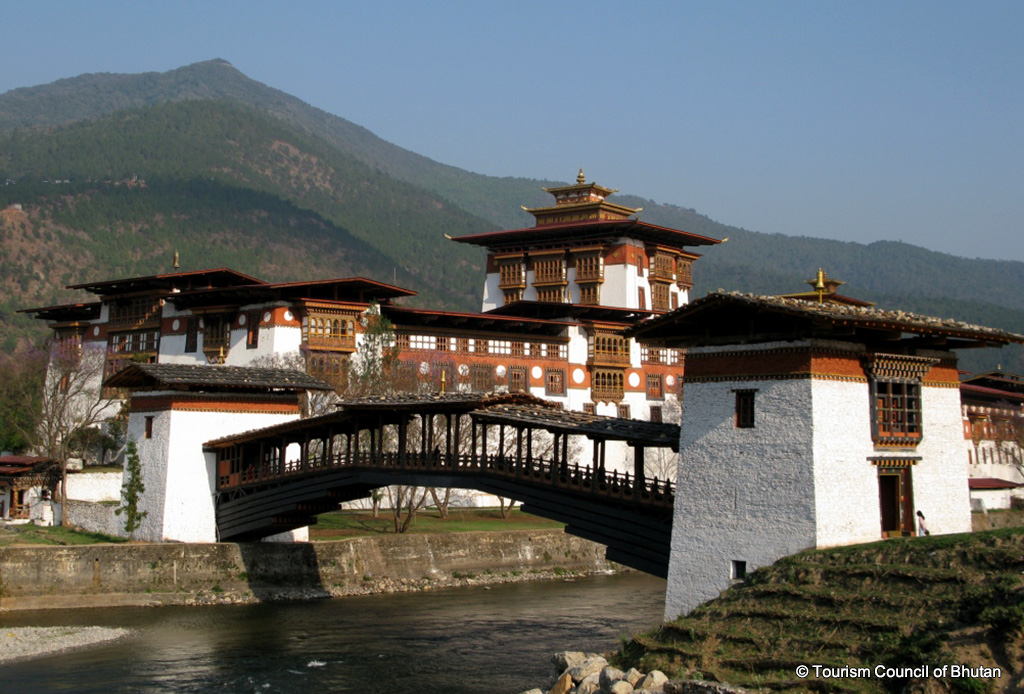
Traveling to Bhutan from Nepal offers an enchanting glimpse into one of the world’s most secluded and culturally rich countries. With proper planning and respect for Bhutan’s traditions and regulations, this journey can be a profoundly rewarding experience.
Important Information :
1. Flight Connections
- Direct Flights from Kathmandu to Paro: The most common and direct route to travel from Nepal to Bhutan is by air. Flights from Kathmandu's Tribhuvan International Airport to Paro International Airport in Bhutan are the most straightforward way to travel. Druk Air and Bhutan Airlines offer services that typically take about 1.5 hours.
2. Visa Requirements
- Bhutan Visa for Tourists: All international tourists, except for citizens of India need to apply for a visa to enter Bhutan. The visa process for Bhutan is unique; tourists must book their trip through a Bhutanese tour operator or an international partner, and the visa is issued upon the confirmation of the tour booking.
3. Travel Packages
- Tour Packages Including Visa: Since independent travel is not allowed in Bhutan, you need to purchase a pre-arranged package tour. These packages generally include accommodation, transportation, a guide, and meals. They also cover the mandatory daily tariff set by the Bhutanese government.
4. Costs and Tariffs
- Minimum Daily Package and Tariffs: Bhutan has a minimum daily spending requirement for tourists, which includes accommodation, food, transport, and an official guide. The minimum daily package price ranges from $200 to $250 per person per day, depending on the season.
5. Cultural Etiquette and Guidelines
- Respecting Local Traditions: Bhutan has strong cultural traditions. When visiting, it’s important to respect local customs such as dressing modestly and asking for permission before taking photographs of people or religious sites.
6. Seasonal Considerations
- Best Time to Visit Bhutan: The best times to visit Bhutan are during the spring (March to May) and autumn (September to November) when the weather is clear and there are several festivals.
7. Itinerary Planning
- Must-See Sites in Bhutan: Your itinerary may include famous sites like the Tiger's Nest Monastery (Paro Taktsang), Punakha Dzong, and the capital city of Thimphu. It’s helpful to discuss your preferences with your tour operator to tailor your visit.
8. Health and Safety
- Travel Insurance: It is advisable to have travel insurance that covers health issues, accidents, and trip cancellations.
9. Cultural Festivals
- Tshechu Festivals: Plan your visit around the Tshechu festivals for a richer experience. These are religious festivals with mask dances, music, and social gatherings.
10. Flights Booking and Availability
- Checking Flight Schedules: As flights from Kathmandu to Paro are not daily, it’s crucial to check the flight schedules and book in advance to ensure availability.
Nepal & Bhutan Combine Tours:
When exploring multi-tour packages that combine the diverse landscapes and cultural riches of Nepal and Bhutan, several key elements are highlighted to craft the ideal travel experience. These packages typically cater to travelers seeking a comprehensive exploration of two of the Himalayas' most iconic destinations. Here’s a detailed look into these offerings:
1. Comprehensive Itineraries
- Cultural and Natural Highlights: Multi-tour packages usually feature a mix of both countries' major attractions. In Nepal, tours often include visits to Kathmandu's historic temples and palaces, the scenic beauty of Pokhara, and the wildlife of Chitwan National Park. Bhutan itineraries might cover the iconic Tiger's Nest Monastery, the serene beauty of the Paro Valley, and the cultural hubs of Thimphu and Punakha.
2. Seamless Logistics
- Travel and Transfers: These packages typically include all necessary international and domestic flights, particularly the Kathmandu to Paro segment. Ground transportation is usually organized with private vehicles, and transfers are meticulously planned to ensure a smooth travel experience.
3. Guided Tours
- Expert Guides: Both Nepal and Bhutan tours are conducted by experienced, knowledgeable guides who are fluent in English and possibly other languages. These guides offer insightful commentary on the cultural significance and history of each site visited, enhancing the educational aspect of the tour.
4. Accommodation Options
- Comfort and Authenticity: Accommodations in these packages range from luxury hotels to comfortable boutique lodges that reflect the architectural and cultural ethos of the region. Options are usually flexible to cater to different budgets and preferences.
5. Cultural Immersion
- Workshops and Experiences: Many multi-tour packages include unique cultural experiences such as traditional Bhutanese cooking classes, Nepalese pottery workshops, and even meditation sessions with monks. These activities provide deeper insights into the local ways of life.
6. Permits and Visas
- Hassle-Free Documentation: Tour operators manage all necessary permits and visa requirements, including the Bhutan visa and the TIMS card for trekking in Nepal, offering a hassle-free entry into both countries.
7. Flexible Duration
- Customizable Lengths: Packages typically range from 10 to 20 days, depending on how extensive the tour is. Itineraries can often be customized to fit the specific interests and time constraints of travelers.
8. Sustainable Travel Practices
- Eco-friendly and Responsible: Emphasis is placed on sustainable tourism practices, with respect for the environment and local communities at the forefront of the activities planned.
9. Health and Safety
- Support and Insurance: Travel insurance is strongly recommended, and support is provided for any health-related issues that might arise during the trip.
10. Festival Dates
- Plan Around Local Festivals: To make the trip even more memorable, it's advisable to align your visit with local festivals such as Dashain and Tihar in Nepal or the Tshechu festivals in Bhutan.
These multi-country tour packages offer a comprehensive way to experience the rich cultures, stunning landscapes, and spiritual depth of Nepal and Bhutan, making them ideal for travelers who wish to immerse themselves in the essence of the Himalayas without the hassle of planning every detail of the journey themselves.
Nepal and Bhutan Tour packages links:
https://www.sundarnepaltreks.com/nepal-and-bhutan-tour
https://www.sundarnepaltreks.com/nepal-bhutan-10-days-tour

